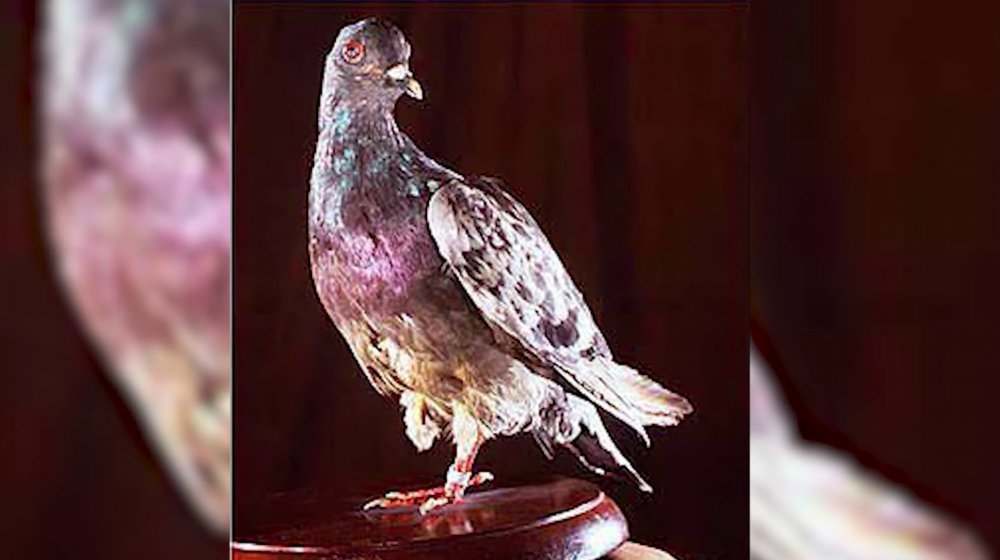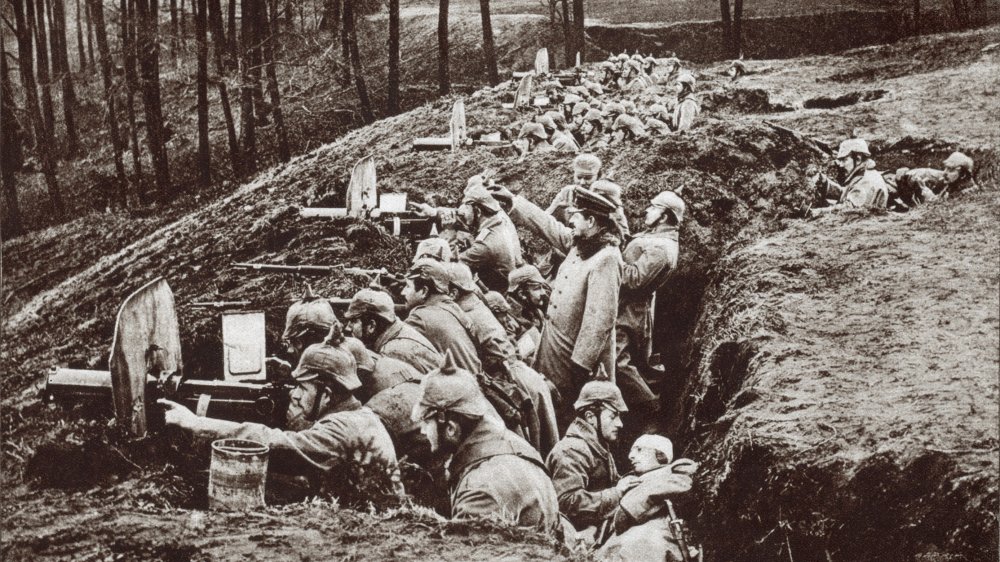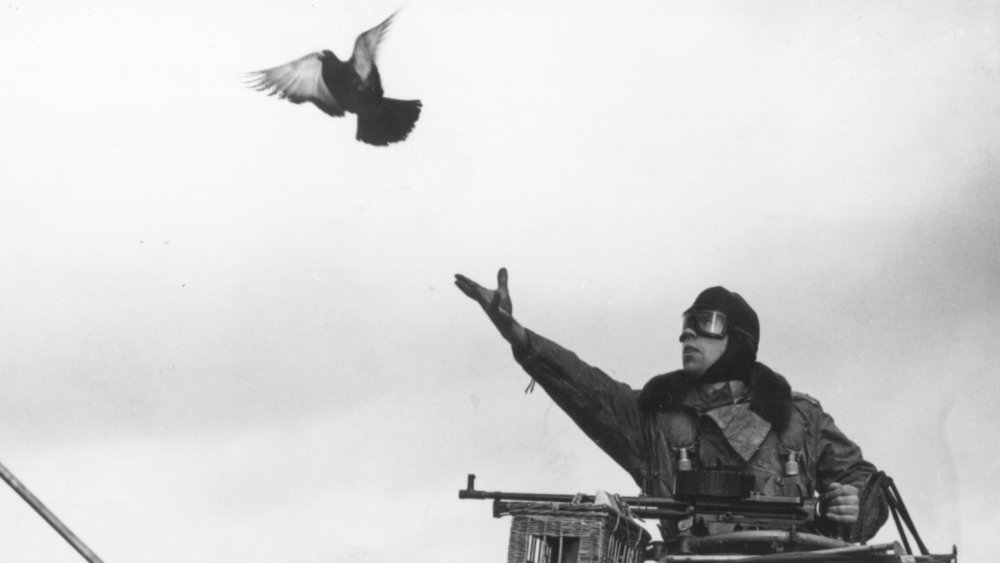The Heroic Carrier Pigeon Of World War I
Animals served a great purpose during the First World War. In a time where military technology was still developing, soldiers rode on horses to make up advanced cavalry units. There was even a baboon who fought in the war. But since communication lines were also difficult to protect, and setting up new radio sites was dangerous, some armies had to use a more primitive network: carrier pigeons. The U.S. Army deployed around 600 carrier pigeons, according to the World War I Centennial Commission, and one stood out as heroic. The pigeon's name was Cher Ami — French for "dear friend."
Radios were less useful the deeper the soldiers went. The U.S. Army Signal Corps decided to use homing pigeons. The birds can fly at 50 miles per hour. Pigeons proved reliable and quick, but it also meant they made for easy targets for German soldiers. Some German soldiers were even trained to spot messenger pigeons, differentiating them from regular pigeons and other birds so they could intercept any message they had. But still, carrier pigeons were the next best thing.
Cher Ami was a female pigeon donated to the U.S. Army Signal Corps by British "pigeon fanciers." Before the mission that made her a hero, Cher Ami had already delivered 12 critical messages for the army stationed in Verdun, explained the Smithsonian Institute. Cher Ami proved especially important when one group of soldiers went missing after an attack in the Argonne Forest. They became known as the Lost Battalion.
A courageous pigeon saved 'The Lost Battalion'
The Lost Battalion, which was made up of the nine companies of the 77th Division — roughly 540 men — had participated in the push in the Argonne Forest, called the Meuse-Argonne Offensive. Buzzfeed reported it was one of the biggest sieges during the war, lasting for 47 days, until the Armistice in November 1918. There were about a million Allied soldiers involved.
The 77th Division, led by Major Charles Whittlesey, were trapped on a hill and surrounded by German forces. Their fellow soldiers had no idea where they were, and they couldn't use radios to relay their location. They were running out of ammunition, food was scarce, and they could only get to water if they crawled under fire to a stream. Whittlesey decided to use some of their pigeons to request help. He dispatched at least two, but the men saw the birds shot out of the sky. Desperate, and taking friendly fire from American forces, Whittlesey tied a message to Cher Ami, their last remaining homing pigeon. The letter was short: "We are along the road parallel to 276.4. Our own artillery is dropping a barrage directly on us. For heaven's sake, stop it."
The moment Cher Ami took flight, the Germans began firing. A bullet hit Cher Ami in the chest, and the Americans watched as she fell. Miraculously, she survived and began her journey to headquarters.
The messaged dangled from a leg
Cher Ami arrived at headquarters badly wounded. She was blind in one eye, and her right leg, which carried the message, was barely attached. Despite being terribly hurt, Cher Ami fulfilled her duty. The Army turned their firepower onto the Germans, and the Lost Battalion was finally saved. Of the 500 men in the division, only 194 survived. The men, though, were grateful to the little carrier pigeon that kept going despite being shot at. They even carved a wooden leg for Cher Ami to replace the one she lost. The French also honored the heroic bird, awarding her the Croix de Guerre, one of France's highest military honors. General John Pershing, commander of the American Expeditionary Force, escorted her back to the United States.
Cher Ami died of complications from her injuries a year later. Her body, sans wooden leg, was stuffed and donated to the Smithsonian for display. (The army did not find out Cher Ami was female until the taxidermy was done, the Centennial Commission said.)
Pigeons may be annoying birds when you live in a city, But thanks to Cher Ami and the other heroic birds of World War I, they can be called heroes. (Unlike those creepy Pigeon Bots.)


